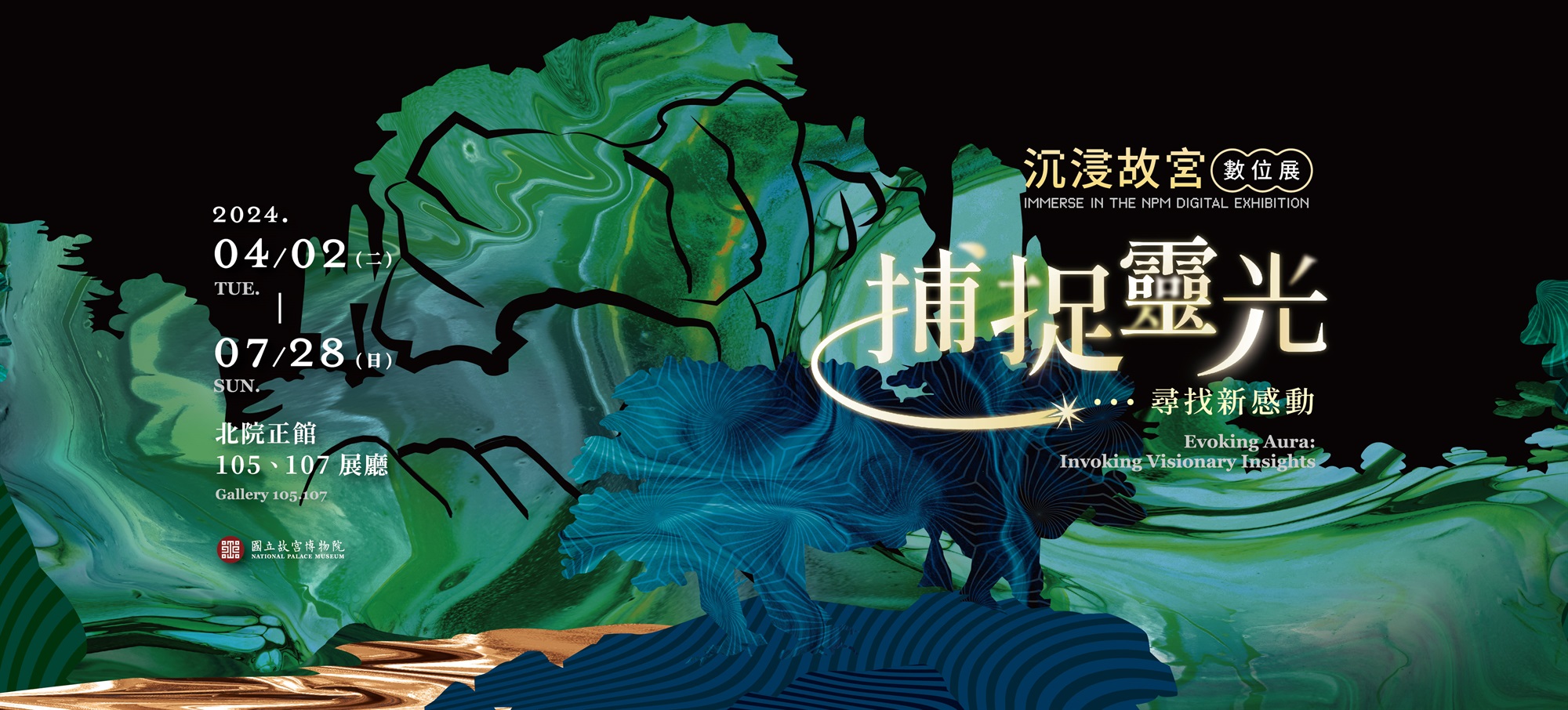Microcosm Art World
The advancement of mechanical reproduction in the Western world resulted in the mass copying and distribution of artworks over a century ago. This led to a new method of collecting and appreciating art through visual media, which has even become integrated into daily life. However, as works of art were moved from their original collection space and were recorded on film, paper, or disk sectors, their unique “aura” gradually faded away.
In this digital age, how can we establish a new connection with cultural relics? How can we experience the same sense of wonder that the ancients felt when admiring artifacts?
This section is “Microcosm Art World”, which means appreciating grandeur in the minutiae. Visitors can admire a trio of national treasures from the Song Dynasty and finely enamelled porcelain, thousands of years old, in exquisite detail. The audience can discover the hidden meanings behind cultural relics that are not immediately apparent. Visitors can experience the essence of spring through brushstrokes, appreciate the intricate patterns on enamelled porcelain, observe the delicate porcelain, follow the donkey tracks on the nature trail and listen to the wind in the pine forests and valleys.
-
Budding Early Spring
The painting “Early Spring” by Kuo Hsi, a court painter of the Northern Song Dynasty, depicts the scene of early spring. The steep mountains are covered by mountain mist and snowmelt, bringing life to the land. The artist’s mastery of composition and realism makes the viewer experience the great cultural imagery of the empire.
Although time has affected the paintings, modern digital technology can capture the textures and brushstrokes on the silk. Therefore, audiences gain a new perspective on the landscape imagery created by artists a thousand years ago.
The first installation in this section, “Budding Early Spring,” uses projection mapping to recreate the mountains and forests in the painting, as well as subtle seasonal changes such as the melting of river ice, the sprouting of plants, and the movement of people. Accompanied by a lively soundtrack, everything in the painting is brought to life through the interwoven display of light and shadow.
-
Kaleidoscope Flowers
Craftsmen of the Qing Dynasty applied enamel and fine lines to create complex and ornate patterns on white porcelain produced in Jingdezhen centuries ago. These patterns were rich with auspicious and artistic designs, satisfying the emperor's pursuit of cultural advancement and his hobby of collecting precious objects.
Today, we cannot freely appreciate the treasures in the museum as the emperor once did. However, in “Kaleidoscope Flowers”, a kaleidoscope is used to create an entrancing immersive space by magnifying, mirroring, and reassembling the wondrous patterns and textures of the Qing palace's treasures. The aim is to maximize the visual sensory experience of visitors.
-
Rotating Landscapes
Have you ever imagined yourself as an emperor, admiring and enjoying the fine treasures made by palace artisans? Due to the protected environments of a museum, we can not easily pick up these national treasures to closely examine the patterns and textures on these artifacts. However, we have other opportunities to observe these cultural relics from different aspects.
In "Rotating Landscapes" installation, visitors can hold and rotate the bowl with the assistance of photography equipment, showcasing the “Bowl decorated with ink landscape in falangcai painted enamels”.
We can closely examine the towering mountains and standing figures depicted on the bowl's surface. By observing the poetry, calligraphy, paintings, and seals on the bowl, visitors can deeply appreciate the unique craftsmanship of ancient artisans.
-
Flowing Light and Colors
Fan Kuan’s “Travelers Among Mountains and Streams” from the Northern Song Dynasty is deeply admired for its brushwork technique and landscape creation. The painting features majestic mountains and is divided into foreground, midground, and background, creating a discontinuous mountain space. By bringing the middle ground closer and pushing the main mountain back, it increases the sense of distance between the distant mountains and the viewer, highlighting the grandeur of the mountain shapes. Additionally, the painting depicts only a few traveling caravans, emphasizing the grandeur of the mountains and the vibrancy of the scene.
The installation “Flowing Light and Color” uses projection to outline the space and contours of the monumental landscape of the Song Dynasty. Fluorescent dots among the mountains guide viewers to hidden messages, such as the main mountain obscured by mist at the foot, monks coming from behind the mountain walls, and the artist's signature covered by dense forests. The audience is invited to explore the captivating features of this ancient landscape painting through the interplay of mechanical devices and dynamic projections.
-
Sound of Pines
How can we hear the wind whistling and echoing through the pine forests in a painting? In ancient times, literati would engage in "spiritual travel" within landscape paintings, requiring rich imagination and viewing tips, a pleasure unique to the cultured elite.
Within the “Sound of Pines” space, visitors can experience the sophisticated enjoyment of ancient spiritual travel through sound installations and immersive settings.
This space is inspired by the hidden mountain paths built in the painting "Whispering Pines in Myriad Valleys," simulating the rise along the mountain terrain. The environmental sounds change accordingly, creating different sounds like streams, mountain winds, pine needles, and waterfalls. This makes the audience feel as if they are in the ideal mountains and forests depicted in the painting, appreciating the exquisite artistic conception constructed by the ancients with their brush and ink.


